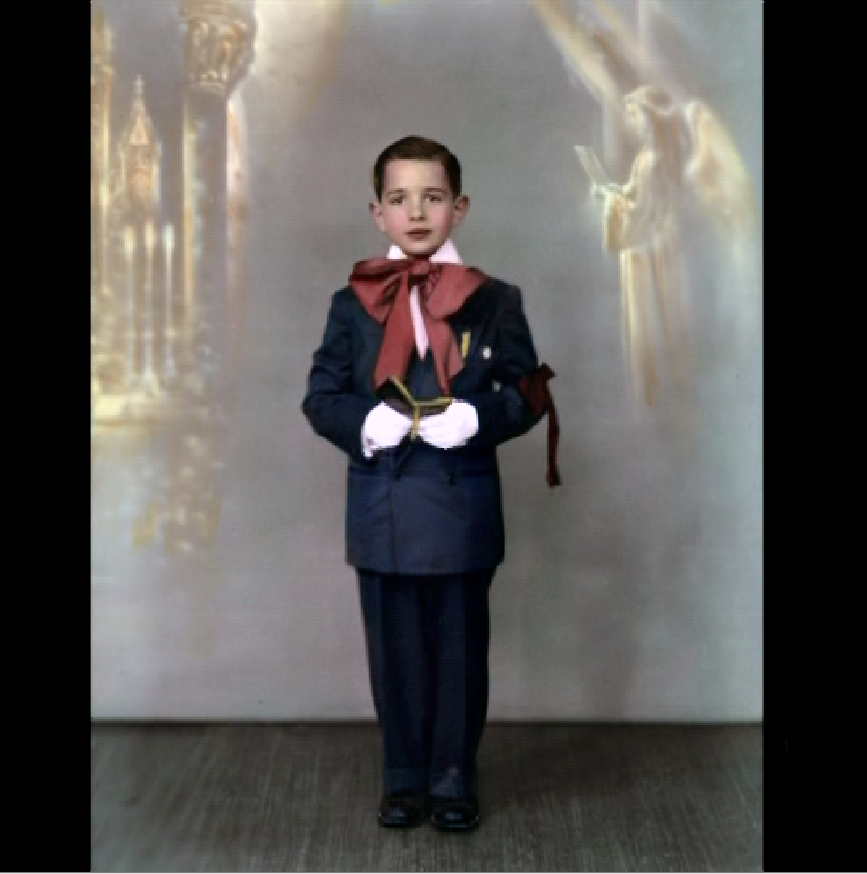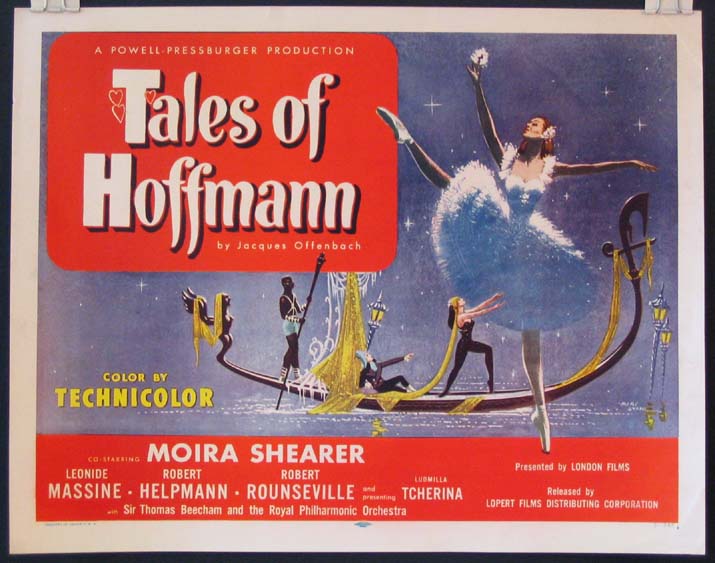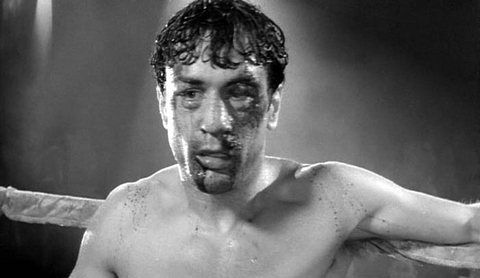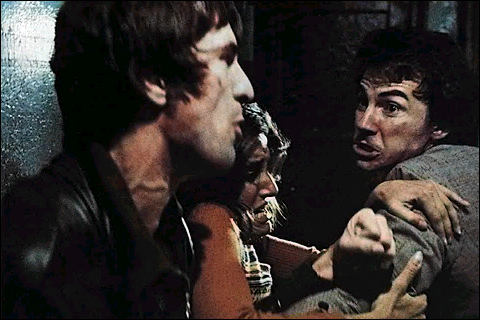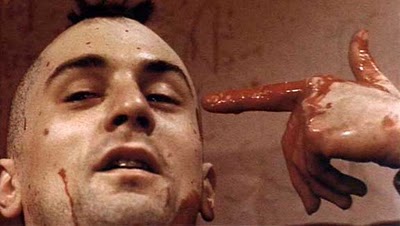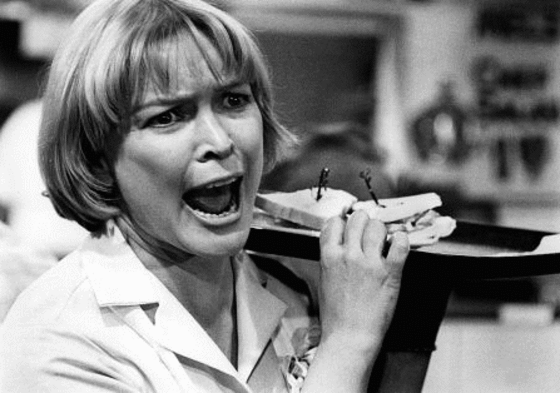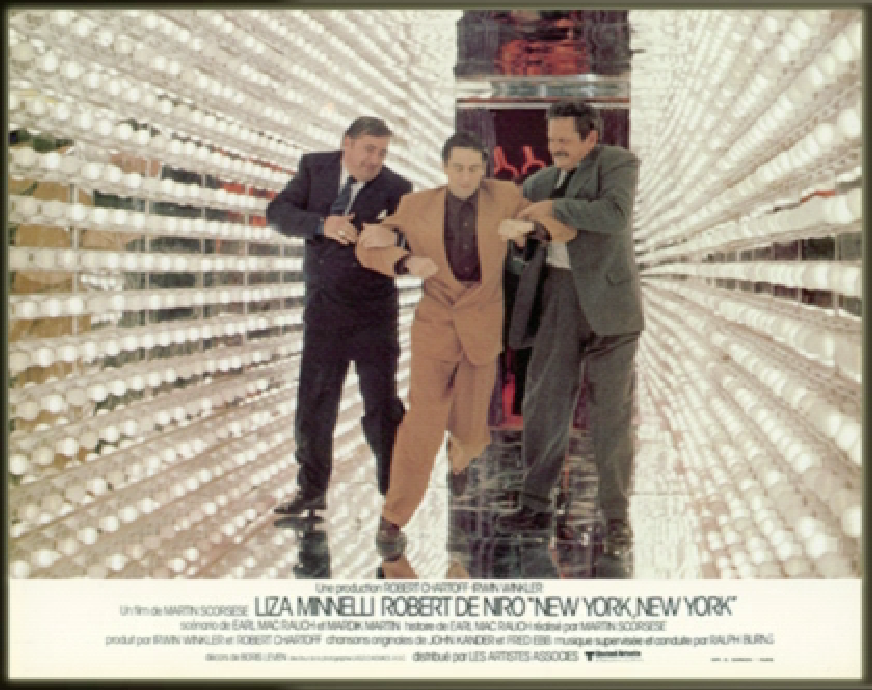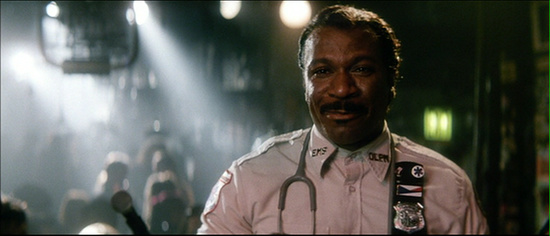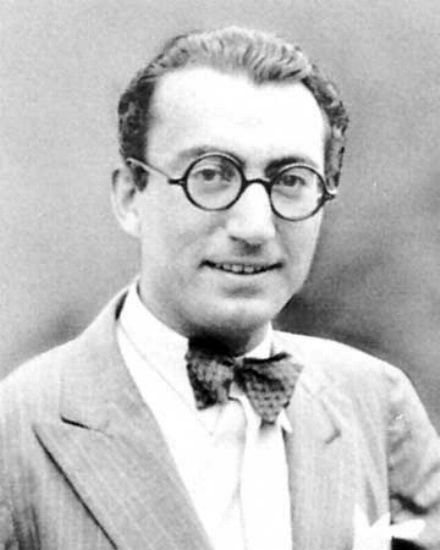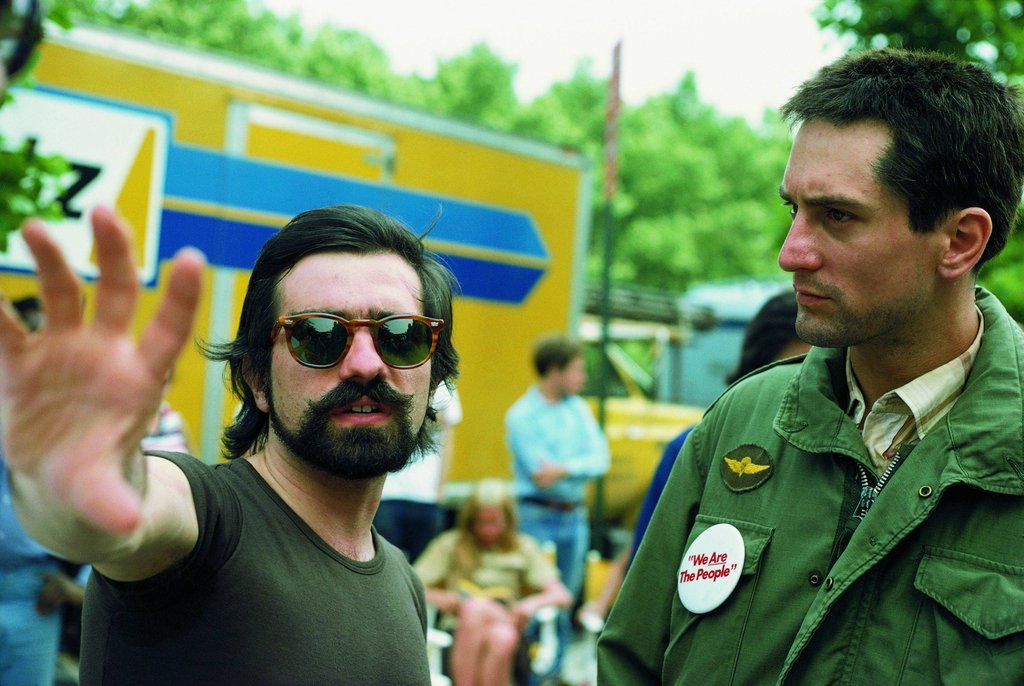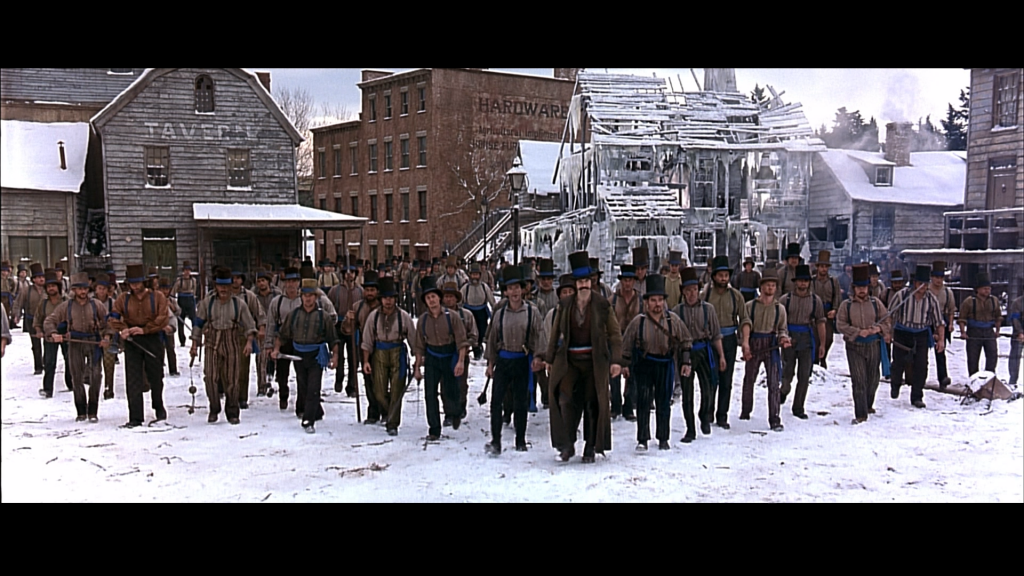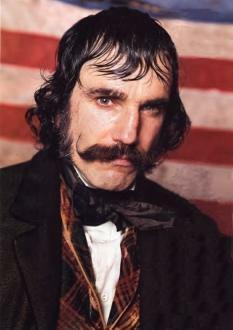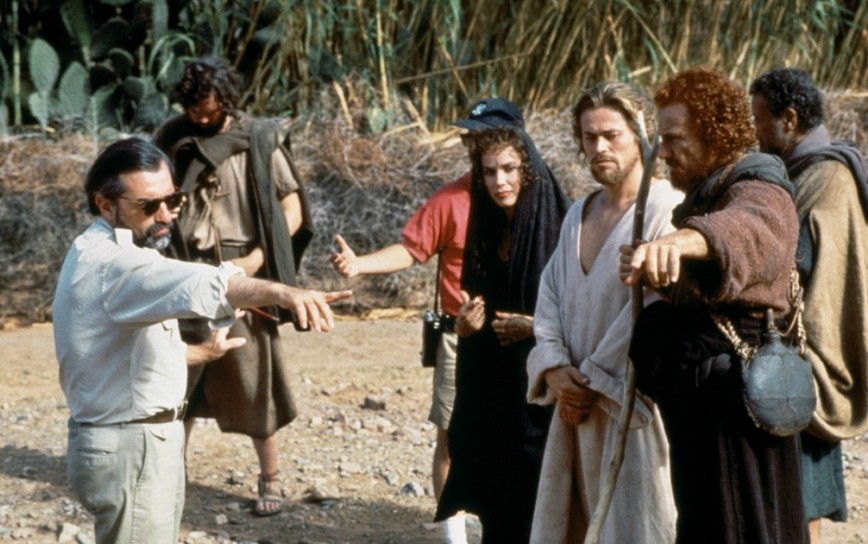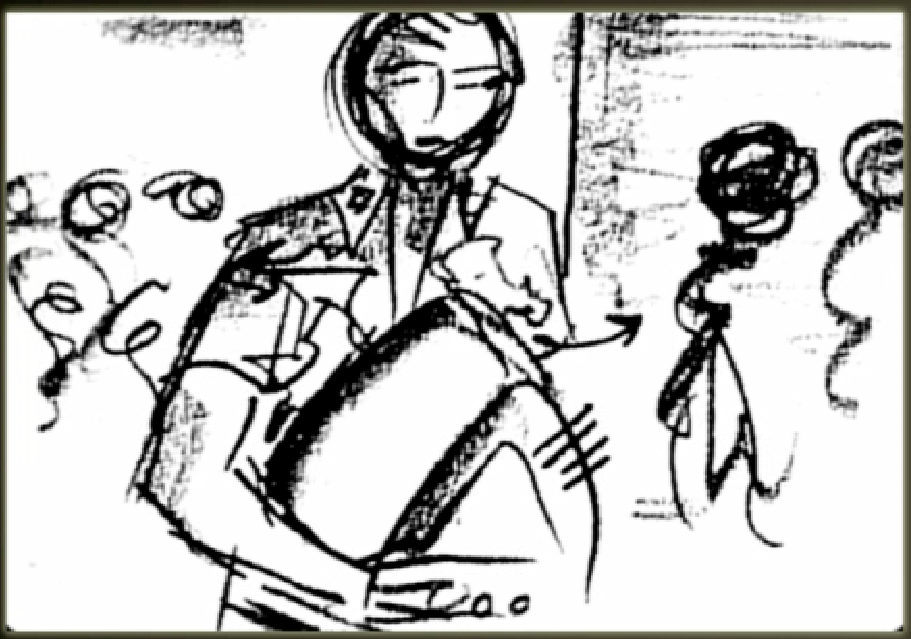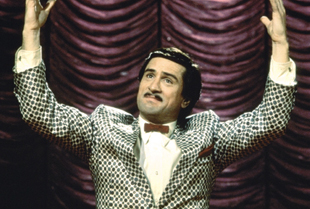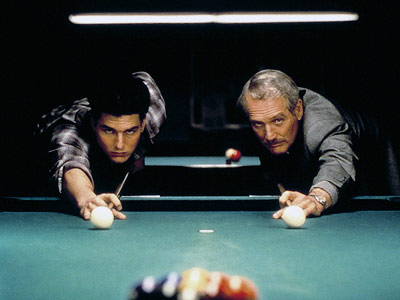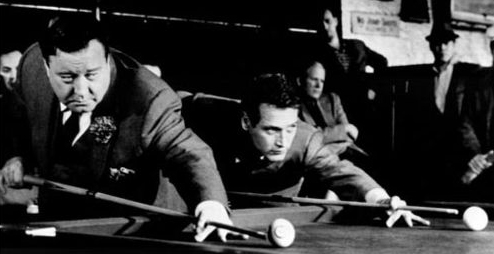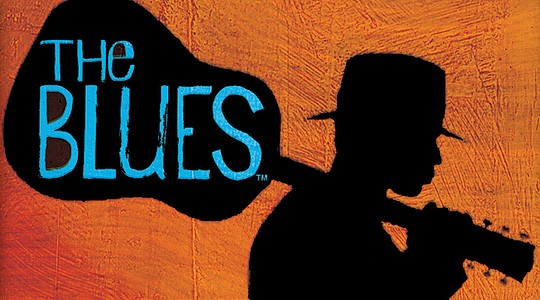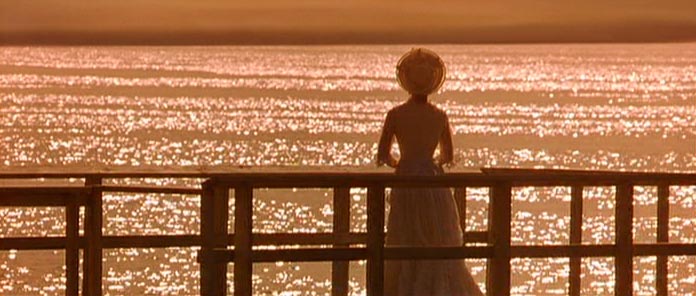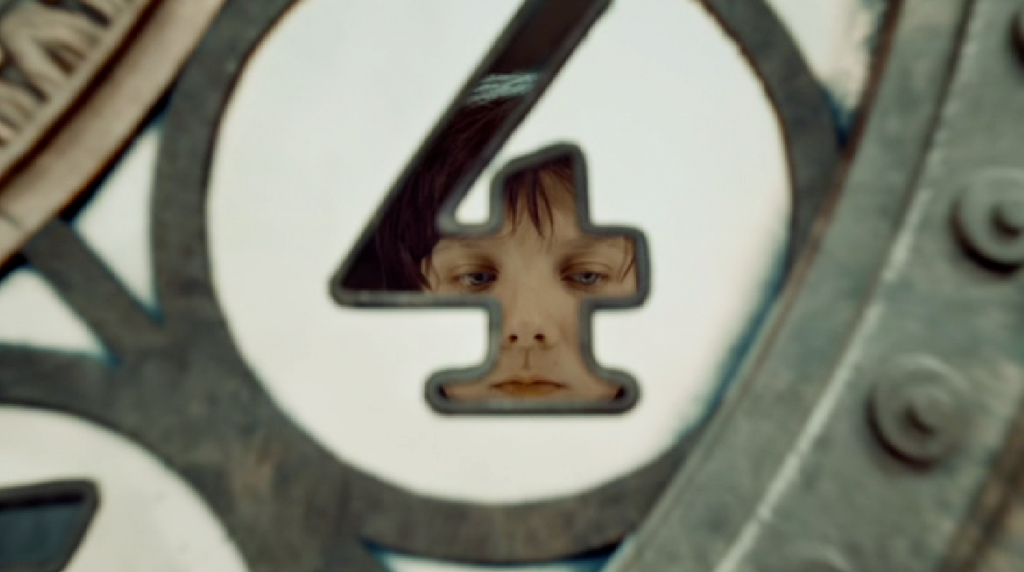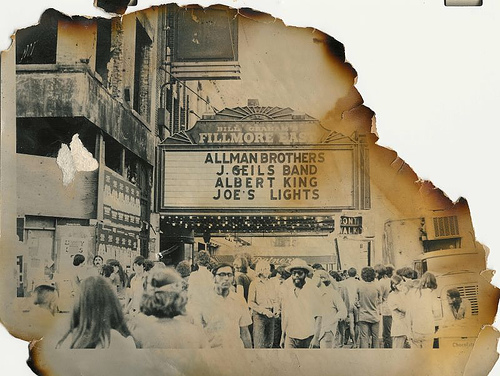There is a scene in Martin Scorsese’s film Gangs of New York where Leonardo DiCaprio, who plays Amsterdam Vallon, is running from John C. Reilly. This is appropriate, since Reilly’s character Jack Mulraney aims to kill.
Amsterdam approaches Jack from behind and attacks. After a violent struggle, Amsterdam strangles the man to death. During the scuffle they knock down a few wooden supports, causing a work canvas to fall. After the dust settles we realize that we are in a church.
That’s a Martin Scorsese picture in a nutshell: Front and center is a violent, gritty struggle for survival, but watch closely and you can’t help but notice the underlying religious elements. It makes sense coming from a guy who once said, “My whole life has been movies and religion. That’s it. Nothing else.” And you thought you knew Martin Scorsese. So did I.
Photo of young Martin Scorsese
Scorsese is an iconic filmmaker who transformed the cinematic landscape. No self-respecting film critic or semi-literate filmmaker will deny his influence. For good or for ill, he paved the way for shows like The Sopranos and filmmakers like David Fincher and Quentin Tarantino.
As readers of my blog should know, I’m not the world’s biggest Tarantino fan. He does some interesting things, but his films consistently get higher ratings from filmgoing hipsters than classic, more substantial films, and that annoys me. You can see what I mean by visiting this Top 250 films list as rated by IMDB voters: http://www.imdb.com/chart/top. Needless to say, the chance to explore a key cinematic predecessor of Tarantino was not reason enough for me to write this.
Scorsese doesn’t quite get the Tarantino treatment from filmschool scene kids, but he comes close. Movie posters of films like Goodfellas, Taxi Driver, and Casino still seem to be fairly well represented in college dorm rooms across the country. That usually suggests to me an oversaturated influence. Nothing wrong with that, but why write about it?
After all, who would argue that Scorsese isn’t a great filmmaker? Plus, I’m not someone who is wowed by graphic violence, but there is more to Scorsese than the way he uses violence.
I started to realize as much when I saw his name appear on commentaries for classic films like Red Shoes and The Tales of Hoffman, both of which are dream-like meditations on art, beauty, and love. They are excellent films, but they’re not the ones you’d expect to excite a master of the gangster-film genre.
Tales of Hoffman – 1951
Then I remembered that Scorsese also made Kundun, a film that surprised me with its Eastern sensibilities. That must have been quite an undertaking for a decidedly Western filmmaker. Scorsese himself acknowledges as much when interviewed by Richard Schickel, “It is antithetical to what we know as Western drama, but does everything have to be Western drama?”
Later I came across interviews where Scorsese would make knowing, appreciative comments about opera. So, the “you talkin to me” street-smart filmmaker is an opera enthusiast? Who would have guessed that?
Then along came Hugo, and that film swept me off my feet in a way that few other films have. Add to that Scorsese’s endorsement of the Canon C300 and his recurring interest in New York—I work for Canon, and I was born in New York—and it felt like he was someone I had to write about.
Scorsese on Canon’s Cinema EOS line
When I say that I had to write about him, I don’t mean that I merely wanted to write about him. I mean that I couldn’t resist the inclination to write this even if I wanted to.
I did resist for a while. I had seen many of Scorsese’s films already, and the idea of seeing them again was not that appealing. I respect the craftsmanship that goes into Marty’s pictures, and many of them are masterpieces, but that doesn’t mean I enjoy watching them all.
His films tend to be long, filled with unsympathetic characters, and prone to end in anti-climactic, even unresolved ways. Besides, I don’t take much delight in seeing people pummeled onscreen, especially when women are the ones being beaten.
Raging Bull –1980
In a Scorsese picture, it is almost guaranteed that someone, often a woman, will get a beating, and the violence isn’t choreographed in the whimsical manner of a classic Hollywood barfight. It is staged to look as gritty and realistic as possible.
As if it isn’t shocking enough when just an ordinary woman gets beaten, in Raging Bull the woman who gets a beating is pregnant. Everyone gets a beating in that film, whether they deserve it or not, and at a certain point that violence does become exhausting to watch.
Nor am I thrilled by incessant swearing, and there are copious amounts of it in Scorsese’s work. Swearing has its place as I discuss here, but its incessant use in films has coarsened our culture. Even when I go to the mall these days, I hear some kid swear at his mom or at his friends. It wasn’t always like that, and filmmakers like Scorsese have helped to suburbanize casual swearing.
It’s not that I’m a complete prude. I enjoy watching The Godfather, for example. The violence in that film is carefully balanced with a sense of family and tradition. We first see Michael Corleone as a likable youth with a moral center, which gives his descent into the mafia a tragic, operatic quality. In a Scorsese picture though, it’s not unusual to enter an entirely unsympathetic world right from the start, making the decay more dissonant.
Mean Streets – 1973
In my resistance to writing this, I reasoned that it is already a challenge for me to stay on my feet without letting negative circumstances get the best of me. Why make it harder with a steady diet of cinematic carbon monoxide, exquisitely prepared though it might be? Still, it felt like there was a reason to proceed and that there was something about Scorsese I needed to discover, so I immersed myself into his films, even though I was fairly certain that watching Scorsese’s films back to back would negatively affect me.
Sure enough, I was more prone to angry outbursts and more likely to succumb to lust shortly after watching some of his pictures. That was enough of an issue that I tried to avoid his more violent films on days when I had important meetings planned. I also resorted to balancing his films with more positive ones, so that the darker things in Scorsese’s films would not overwhelm my psyche.
That mentality is not the norm when discussing films, so allow me a moment to expand on it. As a society, we readily accept the idea that we should be mindful about what we eat, especially before strenuous physical activity like a marathon, and in Super Size Me, Morgan Spurlock showed us the deleterious effects of bombarding our bodies with fast food on a daily basis. Why then are we not also mindful of the media that we consume, when it can significantly influence how we live our lives?
Taxi Driver – 1976
That’s not to say that Scorsese’s films should be avoided at all costs, only that it is best to proceed with caution. In order to discuss these ideas more thoroughly we’ll need to broach the topic of censorship and whether an artist should aim merely to satisfy himself or to also serve his community.
I will address these challenging topics later in this article, but before I do that I’d like to categorize Scorsese’s work in a more precise manner. Up to this point I’ve been discussing his work in a general way while alluding to Marty’s more violent pictures. That’s not the only kind of film he makes though.
Scorsese on set for The Aviator – 2004
This is an oversimplification, but for the sake of our discussion I’ve broken his films into 4 main categories: violent struggle for survival, music appreciation, film appreciation, and search for spiritual meaning. His films usually don’t fit neatly into one category but overlap in several. Still, it’s a good starting point.
Most of this post will be focused on Scorsese’s violent films since that is what he is best known for, but I will address each category at least briefly. The categories do represent a unique aspect of Scorsese that is important to acknowledge when trying to get a fully fleshed out overview of his work.
First, the violent films. Cape Fear, Casino, The Departed, Gangs of New York, Goodfellas, Mean Streets, Raging Bull, and Taxi Driver obviously fit here, but so too does a character drama like Alice Doesn’t Live Here Anymore. In that the violence is mostly verbal, but there are still a few pushing matches, and anxiety about survival is ever present.
Alice Doesn’t Live Here Anymore – 1974
The characters in these violent films are vicious and lacking in manners. The men gallantly spit ethnic slurs at opponents, abuse the less powerful and treat women like objects for their gratification.
The women aren’t much more admirable. They tend to be treacherous, status-minded, and inclined to sleep around to get what they want, specifically material comforts or power. Maybe there’s a reason no one ever called a Scorsese picture a showcase of sugar and spice and everything nice.
No, It’s not a particularly admirable world that Scorsese conveys in those films, but it does have an aura of authenticity. That’s the New York school of storytelling on display, and Scorsese is Mr. New York.
Most of his films—even his period films like Gangs of New York and Age of Innocence—are set in New York. He was born there in 1942 and lived there most of his life. That’s also where he witnessed firsthand the ugly, unglamorous nature of mafia violence. The New York Film Festival influenced him as a child and advanced his career by supporting his films. And you know that classic Sinatra song, “New York, New York”? It actually originated in Scorsese’s film of the same title. (Appropriate that Scorsese is the one who’ll be helming the upcoming Sinatra film, right?)
The title song from New York, New York – 1977
OK. So Scorsese is connected in many ways to New York, but what do I mean by the New York school of storytelling, and how is that different from the Hollywood style? I’ll elaborate with this aphorism I heard a while ago: When a New Yorker frowns and hits you with an f-bomb, he really means hello. When a Hollywood type smiles and say hello, he really means “f@#$ you.”
I was going to use the actual swear words, both above and throughout this piece, to make a point and to convey my antipathy toward Hollywood hipsters, but I thought better of it. Truth be told, I felt like my initial, more caustic tone was not coming from a good place but from my anger at perceived slights from Hollywood types.
My conscience was bothering me about it, so I promised God that this story would be free of swear words if the Giants prevailed against the loathsome division rivals that are the Cowboys. The Giants won, so there won’t be any actual swear words in this post, much as that might disappoint Mr. Scorsese. To quote a Budweiser commercial, “it’s only weird if it doesn’t work.”
Anyway.
Said differently, the New Yorkers tend to deal with what is, with the grimy reality at the hand. That sensibility can be traced back to the New York artists who brought about the Ashcan School movement in the early 1900s, although you could make the case that the New York sensibility predates even that.
Stag at Sharkeys – George Wesley Bellows, 1909
In contrast, the Hollywood types tend to deal with what could be. They are more likely to offer happy endings, to toss around ideals like love, and peace, and diversity. In my experience though, the Hollywood types don’t have the fortitude to back up their ideals with meaningful action. They are just as power-minded and conniving, perhaps more so, than their New York counterparts, but they lack the honesty to admit as much.
Let me give you an example. Say you’re a Hollywood type who believes in diversity. Tell me more about how you’re open to dealing with people from both sides of the political spectrum. Also, were you amused when they put a decapitated George W. Bush head in Game of Thrones, even though it had nothing to do with the medieval fantasy world of Westeros?
Those are the tactics of thugs. If you can’t admit as much, then don’t ask me to come and sing Kumbaya by the campfire.
Over time I’ve moved closer to the New Yorker sensibilities. I can’t imagine that I would be heartbroken if I got a closer look at the Mad Men team and realized that they were actually self-serving, power-minded pigs. That’s an oversimplification of their superlative New York show, but it’ll do for now. My point is that if showrunner Matthew Weiner and company are even the slightest bit more virtuous than the characters on their show, then I would be pleasantly surprised.
The Hollywood types, on the other hand, seem to offer up high-minded, box-office pleasing ideals that they refuse to embrace when the cameras stop rolling. That is heartbreaking to discover.
I’m generalizing, based on my limited observations. If you’re a Hollywood type, you can prove me wrong or man up and be direct when you confront me. This is one of those rare times when I would be very happy to be proven very wrong.
I used to be more fond of the Hollywood types. Frank Capra, Walt Disney, and George Lucas are of the Hollywood school, and they were the ones who got me interested in filmmaking. If my path had crossed with those guys, maybe I’d feel differently. Hard to say.
To tie it back to Scorsese, the opening credit sequence of Mad Men does have some similarities to Scorsese’s Casino, does it not?
Mad Men – 2007
Casino opening-credits – 1995
Let’s talk about those credits in Casino. All that fire, all that red, right after DeNiro’s car blows up, it’s almost as if it is meant to convey something, like say … hell. Casino is not the only film where a wash of red tints the guilty. It also happens in Mean Streets, Goodfellas, Taxi Driver, Color of Money, The Departed, Gangs of New York, and New York, New York just to name a few.
In New York, New York there is an interesting variation of this motif. DeNiro’s character is acting badly, so naturally he’s in a red room. Then he is escorted out through this corridor:
New York, New York – 1977
Right after that the film dissolves right to a billboard of a … and it’s right on the … Well, I’m not telling. You have to look it up for yourself and draw your own conclussions, but when I saw it I thought, “well what are you trying to say there, Mr. Scorsese? Naughty, naughty!”
In Bringing out the Dead, the significance of the color red is the most conspicuous. People on the streets are dying from a potent drug mix called Red Death. Nic Cage visits one of the drug dealers and the walls of the dealer’s apartment are covered in red paint. Oh and there’s that movie poster:
Bringing out the Dead – 1999
More so than any other filmmaker who comes to mind, Scorsese excels at revealing what hell on earth looks like, and he does it in a very deliberate manner.
In Mean Streets, Harvey Keitel’s character Charlie muses to himself, to us, or to God, “It’s all bulls#!% except the pain. The pain of hell. The burn from a lighted match increased a million times. Infinite. Now, ya don’t f@#$ around with the infinite. There’s no way you do that. The pain in hell has two sides. The kind you can touch with your hand; the kind you can feel in your heart… your soul, the spiritual side. And ya know… the worst of the two is the spiritual.”
Again, my apologies to Mr. Scorsese for not including the actual swear words. What can I say? I really wanted to see the Giants win, and a deal is a deal.
Throughout Mean Streets, Charlie is running his finger over flames. It’s a poetic way of explaining that his character is trying to get as close to hell as he can without getting burned. It doesn’t work out so well for Charlie.
Compare that to a quote from Scorsese about his own excesses in Peter Biskin’s book Easy Riders, Raging Bulls: “It was a matter of pushing the envelope, of being bad, of seeing how much you can do. Embracing a way of life to its limit. I did a lot of drugs because I wanted to do a lot. I wanted to push all the way to the very, very end, and see if I could die. That was the key thing, to see what it would be like getting close to death.”
Scorsese ended up in the hospital a few times after overdosing on drugs and came close to killing himself. Is it any surprise then that so many of his characters are self-destructive, suicidal drug addicts? Scorsese has been divorced three times, and his first marriage lasted only a year. Is it any surprise then that dysfunctional families are the norm in his work? He did, after all, modify the Cape Fear script to make the family more dysfunctional so that the story would better suit his sensibilities.
I mentioned earlier that some of the Scorsese films had a negative affect on me when I rewatched them. Might they not also negatively affect others? Might a director’s inclination to push the limits in his own life come across in his work, and might that not also influence others to do likewise?
Vhing Rhames helps to bring a drug addict back to life in Bringing Out the Dead.
When a filmmaker like Scorsese pushes the envelope to gain acclaim, our society tends to applaud that. When a troubled young man pushes the envelope to gain acclaim by imitating what he sees on the big screen and killing people, we are shocked. I’m thinking specifically of Aurora, but this applies to more than that.
Don’t get me wrong. I believe there is value in self expression and even in exploring the darker motives of human behavior. For example, Scorsese’s films serve as a handy primer on the kind of treacherous behavior that might be encountered while pursuing a film career.
Let’s not forget that showing the ugly side of things can take some courage, since most people prefer, when possible, to avoid the ugly truths about themselves and their communities. The real world doesn’t always offer a happy ending, at least not in this life, and Scorsese doesn’t shy away from stories that acknowledge as much, even though it means that his film might make less money.
Nor does Scorsese rely entirely on glamorous people or sexy moments to fill his stories. In Bringing Out the Dead he shows us feeble people close to death and believable drug addicts, neither of which are pleasant to behold. In films like Alice Doesn’t Live Here Anymore, much screen time is given to the irritating antics of the young boy like his snotty nose sniffs and his annoying, failed attempts at humor.
Alice Doesn’t Live Here Anymore – 1974
Other filmmakers would edit those moments out, but Scorsese builds his stories around them. Again, that’s the New York approach on display.
Stories of go-it-alone types like New York, New York, Taxi Driver, Raging Bull, and After Hours are also distinctly New York minded. After all, too many New Yorkers have learned the hard way that it doesn’t pay to rely too heavily on others.
The reality is that everyone’s looking out for himself first and foremost, and if you can’t do the same, then you won’t last long in the mean streets. Is it sufficient though merely to show the reality at hand even if that means it might make things worse in the world at large?
In a “Fresh Air” interview with Terry Gross back in 2002, Scorsese suggests that it is: “In my mind, you know I think it is very important to depict this lifestyle, and you have to show the downside, and this is the downside of it, and you have to be honest with it. I just think you have to honest with the portrayal of violence, not glorify it but just put yourself in that position to understand the brutality of it,” and I grant him those points.
Scorsese on set for Taxi Driver – 1976
I will add too that it is not possible to get a sense of what it means to human unless you take into the account the villainy as well as the majesty. It’s just that there is a danger of spreading evil when you aim to merely examine it. There is also something to be said for a civil society, one in which people treat each other with respect, where husbands and wives love each other, and families are happy.
I wouldn’t want to do something to eat away at the tenuous social fabric just to satisfy my own desires for self expression. I am not somehow denying truth or stifling my creativity by using the bathroom in private and not relieving myself in a public place. I am doing so out of respect for others and out of a desire to inhabit an enjoyable space. It’s sort of like that with what I choose to include or exclude in the art I produce.
Contemporary artists tend to place self expression above all else, even to the detriment of society, but artists and statemen need not be at odds. I’ve mentioned this quote from Old-Hollywood, award-winning director Rouben Mamoulian before, but it bears repeating: “I feel the judgement on a film is if a person who sees it leaves the theater a little better person than he was when he walked in”
Rouben Mamoulian
If films make for better citizens then noble artists and statesmen have a common goal, but that kind of thinking has gone out of fashion. Why is that?
In sports, we want to see a coach do his best to get a win for the team but not to do so by compromising the safety of the players. The professional leagues are constantly reviewing the rules of their respective games to ensure that the players are protected. You don’t hear players lamenting freedom of expression violations when they are not allowed to throw bats at the spectators.
Question a filmmaker’s actions though, and you might get a response like this: “You can’t censor me man. Ever heard of freedom of speech, you Nazi?” Although Scorsese faced censorship challenges in his career, he strikes me as being more thoughtful than that, but I wouldn’t say the same thing about some of his proteges.
But those censorship Nazis, like that Will Hays who oversaw the bygone Production Code, what deplorable excuses for humanity they were. Right?
Actually I ran across some footage of the guy in doing research for this. He seemed rather charming, the kind of old-world entertainer who might break out into song at any moment just to make you smile.
Will Hays
But listen to what this monster said, “The code sets up high standards of performance for motion picture producers. It states the considerations which good taste and community value make necessary in this universal form of entertainment: respect for law, respect for every religion, respect for every race and respect for every nation.”
You heard the man. He wants to respect the law and every religion and nation! He is a Nazi if I ever saw one! Wait, he wants to respect everyone, AND he values good taste? Hmm … that doesn’t sound so bad, but what does he really mean? That must be some kind of Nazi code!
As if we needed more proof of that, look at the films made when the Hays Code was in effect: Casablanca, Gone with the Wind, Citizen Kane, The Searchers, and Lawrence of Arabia. How did people live with such sparse and oppressive cultural contributions? Now that the Nazi has been vanquished we can enjoy American Pie, Saw, and Tarantino’s Deathproof! Ding Dong the Witch is Dead, people! Well, that one was also made during the Production Code, but you know what I mean.
I guess the Hays Code is a relic of the Hollywood school of storytelling, not the New York school. What can I say? I’m conflicted in my allegiances.
Some of this might seem like a digression. It is, sort of, but I don’t know how to do a full assessment of Scorsese’s work without looking at the way the landscape has changed because of his influence, and thanks to Scorsese filmmakers are now more inclined to depict vice in an explicit manner.
Scorsese on set for Taxi Driver – 1976
Remember, when Taxi Driver first came out the film’s graphic violence was deemed by a few critics to be shocking and morally reprehensible. Now that style has become commonplace, and films that explore the lives of psychopaths and snipers have increased, as have real-life mass shootings.
I’ve spent some time addressing my reservations about Scorsese’s work, but that does not mean I lack admiration for his work. I’m just conflicted in my admiration.
Here are some of the attributes of a Scorsese picture that I do admire:
His attention to detail is astonishing. He carefully calibrates shoe style, hair cut, and shirt collars to perfectly convey character. His ethnic groups aren’t caricatures but astutely delineated approximations. To evoke the style of a certain era and in the spirit of authenticity, Scorsese will even resort to more cumbersome, antiquated technology as he did with the color processing on the Aviator or with the effects in Hugo.
Martin Scorsese featured in an American Express commercial
You see Scorsese’s love of cinema and dedication to excellence in the complexity of his shots. It’s as if he challenges himself to find the most elaborate way to convey a certain plot point to the audience, and then he refuses to move on until he gets that moment exactly right.
Think of the classic Steadicam shot in Goodfellas, the shot in Color of Money that follows the pool ball into the pocket or the one where Tom Cruise makes the shot without looking, the introduction to Paris station in Hugo, or the heavily choreographed fight sequence that opens Gangs of New York. How interesting our world would be if all of us put that kind of effort into our own work, cinematic or otherwise.
I opened this piece with a scene from Gangs of New York, but let’s take a closer look since it is important part of Scorsese’s work, and it does much to clarify his work at large.
Gangs of New York – 2002
In the commentary, Scorsese talks of the film affectionately as a kind of origin story for his mobster films and for his beloved New York City. The Five Points, where the film takes place, was a real neighborhood in New York, and it was no walk in the park. When Dickens visited it he found it to be worse than anything he’d encountered in London.
In spite of his affection for the city, Scorsese resists the urge to romanticize New York. Instead he dramatizes the ugly parts, showing us in a heightened way the racism amongst rival ethnic groups, the rampant street violence, the aversion to President Lincoln’s reforms, the corruption of Tammany Hall, the strong-arm voter tactics of the time, the damage done by rivalry between fire departments, the way the soldiers were coerced into fighting in the Civil War, the rowdy blackface performances and circus spectacles, and the decadence of the opium dens. That’s weeks of American history packed into one dramatically compelling, occasionally savage, film.
American Express commercial featuring Robert DeNiro, Directed by Scorsese – 2004
Those are not qualities most of us want in our cities, but there is value in acknowledging their existence. Assuming that the corrosive reality does not somehow corrupt the observer, which is a legitimate risk, then seeing the ugliness of things as they are can lead to corrective action.
It is worth mentioning too that the film came out in 2002, and the film concludes with a kind of time lapse of modern day New York. It ends with a skyline of the Twin Towers.
Daniel Day-Lewis’s Bill the Butcher is the savage villain at the heart of the story. He doesn’t hesitate to kill those who stand in his way, but he does not try to kill Leonardo DiCaprio’s Amsterdam Vallon when he first learns of his treachery. Instead he allows him to raise an army against him because he admires his “murderous rage.” Bill the Butcher goes so far as to suggest that there is something inherently American in a savage struggle for survive, and Scorsese seems to agree.
Bill the Butcher, Gangs of New York – 2002
It’s not exactly how John Ford would phrase it, but it is a valid interpretation of American history. Is it the one we want to pass on to our kids though?
That said, if you strip away all the spectacle of that film, you’re still left with a morality tale. Over at Satan’s Circus (that’s the actual name of the hideout) you have Bill the Butcher—a murderer, racist, and schemer—and his assortment of rogues, corrupt officials, and pickpockets. On the other side is Amsterdam Vallon, oppressed Irish immigrants, liberated blacks, and believers of democracy. Want to guess where they are headquartered? That’s right. At the new church they’re building.
This quote from Amsterdam is their rallying cry: “The past is the torch that lights the way. Where our fathers have shown us the path we shall follow. Our faith is the weapon most feared by our enemies. For thereby shall we lift our people up against those who would destroy us.”
Faith: There it is again. It’s not in the pristine, easy-to-digest form that some of us have come to expect from our spiritual leaders, but it is there nonetheless. If you don’t acknowledge its presence, there is only so much depth you’ll take away from Scorsese’s films. It’s sort of like reading Dostoevsky’s Crime and Punishment because you’re looking for a terse psychological thriller: You’re missing the point, and so you’re better off consuming the fast-food equivalents.
Scorsese’s film Last Temptation of Christ was definitely not an easy-to-digest film for many religious types. The film caused such controversy that Scorsese received death threats for it and had to travel with bodyguards for months after the film was released.
Scorsese on set for Last Temptation of Christ – 1988
From what I saw and read of them, the protesters were acting from an impression that Scorsese was this infidel Hollywood type who was trying to desecrate a faith dear to them. While I can understand their reactions, that’s not the impression I got of Scorsese in my exploration.
Scorsese himself explains that when a studio head asked him why he wanted to make the film, he replied by saying “I wanted to get to know Jesus better.” In his film, he shows Christ as a man who sees the ugliness in the world but wants to transcend it, who starts to sense that he has a higher purpose in this world but must grapple with the ever present, pulsating temptations that try to distract from that purpose.
There were one or two shots that I could have done without, the ones that added fuel to the controversy without adding much to the story, but overall I embrace the film as a personal, courageous exploration of faith.
In the film, Christ does imagine what it would be like to raise a family and be sexually intimate with Mary Magdeline, but he chooses instead to avoid that option and face the hardships that come with his divine destiny. Spoiler alert: He dies. To say that Christ was tempted is not inherently blasphemous, but the merit of the idea’s execution is open for debate.
Scorsese acknowledges that the film was his way of exploring what it might be like to be both God and man, and what man isn’t tempted by a beautiful woman, Scorsese implies. Did it really happen that way? Who knows, but it is a personal look at Scorsese’s own struggles with faith, much in the same way that Matthias Grünewald painted Christ as if he were afflicted by the same plague that was ravaging Europe when Grünewald was painting.
Isenheim Alterpiece – Matthias Grünewald, 1512-1516
It may not be historically accurate, but it gets across a greater truth: Christ was a man of sorrows who suffered much and faced temptation similar to what we’ve all known. Neither Scorsese’s nor Grünewald depiction of Christ matches the pleasant, air-brushed Jesus who is brandished by those who want to keep things comfortable.
Martin Scorsese often puts himself in his films in interesting ways, and notably in Last Temptation of Christ, he uses his own voice for that of the Devil in the wilderness. Scorsese has repeatedly quoted parish priest Father Francis Principe’s critique of his films that he shows “too much Good Friday and not enough Easter Sunday,” so it is almost as if Scorsese is acknowledging his own death-bringing tendencies that can, if fully embraced, lead himself and others astray.
Still, it is only fair to point out that Scorsese is far more reverent in his treatment of the Dalai Lama. At no point in his film Kundun does the young Dalai Lama violate the tenets of Buddhism, although presumably he would have been tempted to do so, much like Christ was. This might be due to Scorsese’s reverence toward a religious tradition of which he is an outside observer. Kundun also came several years after Last Temptation of Christ, so Scorsese’s feisty defiance of religious conventions may have mellowed somewhat.
That being said, the taboo-breaking aspects of Last Temptation of Christ still testify to the subversive side of Scorsese. Then again Doestoyevsky had a subversive streak too. After all, in Crime and Punishment it is Sonya the prostitute who brings the message of God’s grace to Raskolnikov. Well…nobody’s perfect!
There is something to be said for being spiritually minded but also acknowledging the struggle, instead of whitewashing reality. If only the saintly and the immaculate were to speak of spiritual matters, then the rest of us would despair at being so far from the ideal.
It’s sort of like how Director of Photography Michael Chapman was encouraged by seeing Scorsese’s rough storyboards. As Chapman explains, their unpolished nature reminds him that, contrary to how he might appear from a distance, Scorsese too is mortal.
Scorsese’s storyboard for New York, New York – 1977
In our spiritual struggles through life, most of us need to see the rough sketches, the works in progress of others. It is reassuring to see that others too are struggling, and if others can prevail in their struggles, then perhaps we too will someday find the grace to get past ourselves.
Hugo is based on a children’s book, but it is still very much a film about spiritual struggle. As Hugo explains, “everyone searches for purpose. Maybe that’s why broken machines make me so sad. They can’t do what they’re meant to do. Maybe it is the same with people. If you lose your purpose, it’s like you’re broken, like Papa George. Maybe we can fix him.”
I first saw that film when I was getting the devastating, thoughtless treatment from a few Hollywood types. I was at the point where I was seriously questioning my interest in working in an industry where people can transition so effortlessly from smiling at the cameras to being monstrous when they’re off, but the optimism of Hugo, its celebration of filmmaking and of the power of cinema at its best reinvigorated my career aspirations, for a few months at least. It is by far my favorite of the Scorsese pictures, but ironically enough it is also the most Hollywood in its sensibilities.
Scorsese on set for Hugo – 2011
Usually Scorsese is not so rosy in his movies about filmmaking. In the commentary track for Casino, Marty suggests that the casino bosses were not unlike studio executives. I can only imagine the kind of studio executive who would be flattered by the comparison, but I’m sure he’s out there somewhere.
In the Aviator, director-producer Howard Hughes is a visionary but also a self-destructive narcissist driven to madness. I know that one is based on a true story, but it is worth mentioning that Hughes is the only famous filmmaker that Scorsese has chosen to profile.
Says Scorsese, “It’s a fascinating story for me because he’s the richest man in the world, yet he’s not safe from himself.” Would you want to spend months of your life working with that kind of man? And yet, someone’s got to do it and get paid handsomely for the trouble. Otherwise films wouldn’t get made.
King of Comedy – 1983
In The King of Comedy, the Jerry Lewis character, Jerry Langford is the typical dismissive celebrity jerk when he isn’t doing his routine, and the only way that Robert De Niro’s character, Rupert Pupkin can get any respect from him is when he threatens Jerry with violence. Then again, Rupert is willing to kidnap Jerry just to get a chance at fame. Ah, show biz! Regardless of where your sympathies lie, the film does not exactly make you want to dive right in to the worldwide web of entertainment, but it is honest.
Then there is The Color of Money. There are many films that talk about filmmaking under the guise of a different subject, but they do so in a subtle way. Not Color of Money. It’s about as direct as it can be about its preoccupations.
When Tom Cruise’s Vincent gets angry that Paul Newman’s Fast Eddie Felson was feeling up his girlfriend for the sake of a con, Fast Eddie responds by saying, “I’m acting. It’s acting.” His girlfriend adds, “Hey look Vincent, when you go into movies and you see people kissing, what do you think, they go home together? They’re professionals, Vincent.”
The Color of Money – 1986
The reality is that actors do go home with each other after working on a film shoot and that the acting they do can strain relationships, especially when ambition and desire for money are the driving forces behind those relationships. In the film, Fast Eddie is actually partnering with Vincent’s girlfriend to manipulate him into compliance.
Fast Eddie tells Vincent, “Human moves, kid. You study the watch, but I study you.” That’s as concise of a description as you can get of a film director at work.
Vincent goes along with Fast Eddie because he is intrigued by the opportunity but also because he looks up to Eddie and sees him as a kind of father figure. Eddie though sees Vincent as just a potential paycheck. It is heartbreaking enough when Vincent starts to realize this, but it is even more so in context of the 1961 film The Hustler.
The Hustler – 1961
The two films are 25 years apart in production, but the Color of Money is still a legitimate sequel to The Hustler, directed by Robert Rossen. In the Hustler, Paul Newman also plays Eddie Felson, but in that one he is the apprentice to Jackie Gleason’s Hustler. ( A neat casting choice to allow Newman to revisit the character, right?) As an apprentice, Paul Newman is the earnest young man, but the Hustler is gaining influence with him. Realizing that she’s losing him, Eddie’s saintly girlfriend pleads with him to choose love, but he chooses the life of the hustler instead.
Fast forward to the Color of Money. Eddie is a broken, miserable man, but he is still trying to turn Vincent into a version of himself. Eventually Vincent gets better at running cons, as Eddie obsesses over how to get back in the game and get bigger than ever. The film ends with no one finding satisfaction, and by then it is clear that the color of money isn’t green; it is red.
Scorsese’s music films tend to be a little more optimistic, and that probably has something to do with the role of music in his life. Says Scorsese at the beginning of his documentary The Blues: Feel Like Going Home, “I can’t imagine my life or anyone else’s without music. It’s like a light in the darkness that never goes out.”
The Blues – 2003
Similarly in Bringing out the Dead, when Nic Cage is trying to resuscitate someone he asks the family, “Do you have any music? Music. I think it helps if you play something he liked.” (The family looks for a Sinatra album to play.)
The choice of music adds distinct vitality to Scocerese’s troubling violent sequences in films like Mean Streets and Who’s that Knocking at My Door. And yes, Scorsese was using music as counterpoint long before Tarantino ever tried it. In films like Gangs of New York and The Departed, the music gives texture to the ethnic communities on display.
Scorsese’s documentary film The Last Waltz is considered by many to be the definitive rock concert film, although I wasn’t familiar with it prior to preparing for this post. When I saw the list of musicians involved, I figured that they had a strong music budget to be able to include a wide range of songs, but the list pertains to musicians who were actually IN the film as performers!
Here are just a few of the musicians who perform along side The Band in the film: Bob Dylan, Eric Clapton, Joni Mitchell, Muddy Waters, Van Morrison, Emmylou Harris, and Neil Young.
The Last Waltz – 1978
To have all those performers in one place to send off The Band gives the film a surreal quality. It’s almost as if the musicians sense that their time on earth with each other is limited, so they’ve got to make it count. It’s the Last Supper of a fading generation’s Rock ‘n’ Roll legends, and what a supper.
In Scorsese’s documentary George Harrison: Living in the Material World, there is a similar ethereal sense, contrary to what the title suggests. The film begins by showing all the distractions that the Beatles faced: the fame, the drugs, the girls, and so on.
It’s as if the film is trying to convince us how unlikely it would be for someone to find a spiritual path amidst all that, but that’s what George Harrison did. He retreats from the material world, seeking spiritual fulfillment instead, and so it ends well for him. I don’t want to spoil it, but it is one of the most transcendent endings of a Scorsese film, up there with the ending of Last Temptation of Christ and the Last Waltz.
George Harrison: Living in the Material World – 2011
Let me close with Scorsese’s Age of Innocence. That one took me a while to classify in relation to his other films. It’s not quite a vicious struggle for survival. Nor is a romance or a story of a spiritual awakening. It’s more like a story of a spiritual journey that almost was, but one that didn’t quite work out.
The film makes us believe that Daniel Day-Lewis’s Newland Archer would be happy sharing his life with a certain woman, but society does not agree. This discourages him, and so he keeps the lady at a distance, but he does not give up entirely on the prospect.
In a fateful moment that resonates throughout the film, he tests fate. “He gave himself a single chance,” the narrator explains. “She must turn before the sailboat crosses the limerock light. Then he would go to her.”
Age of Innocence – 1993
What happens next changes his life. Was it his fault? Was it hers? Society’s? Hard to say, but clearly something that should have been wasn’t. Newland tries to forge a new life, but he is never quite the same after that.
The film ends on a poignant note with Scorsese’s dedication to his father, who died on the same year of the film’s release. The story does parallel in some ways the details I’ve read of Scorsese’s childhood, so I wonder how close to home the film hits.
Further reflection on Age of Innocence put the rest of Marty’s films into perspective. Scorsese’s main characters tend to be on some kind of spiritual quest, but most of the time they don’t get it exactly right. They are instead led stray by one thing or another, by violence, by sex, by social pressures. Whatever it is that gets them, it doesn’t let go easily, and more often than not, the characters don’t find their ways back.
They cling to their distractions, and in so doing they place themselves in a hell on earth of their choosing. If only someone had been there to help them get it right, but that’s not usually how it goes with a New York state of mind.
Hugo – 2011
It takes me a little longer to write the kinds of posts I prefer to write, and sometimes my schedule gets complicated, so I can’t promise to have new posts available on a consistent schedule. That’s why I encourage you to sign up by email. You can do that by clicking here.
If you’re following along by email, you’ll know right away when I have a new post waiting for you. It is very easy to unsubscribe, and you won’t receive anything unrelated to my blog.
Lastly, if you appreciate my writing, why not write a comment or share the post with a friend? It would encourage me to keep sharing some of my heart with you.
As always, thanks for reading and God bless.
